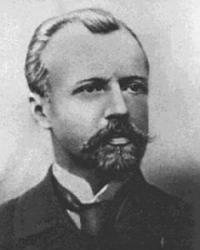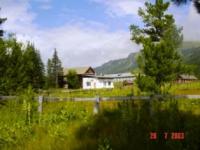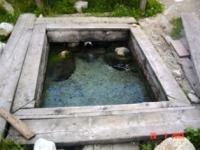You are here
Sights Rakhmany springs.





Trip to Rakhmany springs.
“Nature is an infinite sphere whose center is everywhere”
Ralph Waldo Emerson.
Excursions to Rakhmany springs.
Lake Rakhmanov is situated in a deep valley of the Arasanka river, the left confluent of the Belaya river (basin of the Bukhtarma river). The lake sits 1725 m above sea level in a small trough-like basin, and stretches itself from northwest to southeast.
It measures 2,6 km in length and 0,6 km in width with 5,6 km of coastline and total surface area of 1,14 km square. The water of the lake is of a beautiful greenish blue colour. The water transparency is 7,8 m. In summer, surface temperature does not get above 10 - 12 °C.
The bottom temperature is 4,6 °C. The low temperature is due to the lake's high position and relatively deep water (maximum depth -30,6m), as well as to an inflow of water from cold sources. It is a running-water snow-fed lake.
The bottom of the lake is covered with brown silt. The offshore coastal strip is carpeted with sand, pebbles and boulders. Cliffy ridges surround the lake. The more gentle ridges go down to the lake and link with the southwest shore.
High mountain ranges surround the lake on three sides. The mountains are covered with thin larch, cedars, birches, and willows. The coastline vegetation is amazingly beautiful: age-old cedars and dark green fir trees hem the lake's smooth surface.
The Upper Arasanka river flows into the lake, and the Lower Arasanka (Rakhmanovka) flows out of it. Over 20 million m3 of water is accumulated in the Rakhmanov lake. The water is ultra fresh, mild and subacid.
Lake Rakhmanov is considered to be a dead lake since it does not have any fish or other inhabitants.The legend has it, the bottom of the lake is divided into two halves. There is an air capsule between the two parts, where a shaggy old man lives.
If you go by boat to the centre of the lake on a full moon night, the old man will drag you down to his dwelling at the bottom of the lake. People say that this place is haunted. However, according to the locals, these ghosts are harmless and are on the prank.
The rumours about the spirits have not been confirmed, but the absence of fish in the Rakhmanov lake is explained by the fact that there is a high concentration of radon in the lake. It is this lifelessness that gives life to the body.
There are warm radioactive springs on the northwest shore of the lake. They are called Arasan (warm springs). The thermal water springs from the fissures, where granite borders on shale rocks, from the east to the west, and almost all of them flow in one line, being 80 m long.
The Rakhmanov springs (height - 2034 m) are found in the valley of the Arasan river and are protected by the 2500-meter high mountain ranges. The spring water temperature ranges from +34 to +43 °C, and has the lowest mineralization level among all highland mineral water sources of Kazakhstan.
The silicic acid accounts for 10% of the spring water composition. People come here to treat the ailments of ankles, nervous system, blood circulation organs, consequences of inflammatory processes in the abdominal cavity, skin diseases, female disorders, urologic and occupational diseases.
The springs water is colorless, very clean, and, practically, does not contain any suspended matter. It does not have any flavor and is pleasant to drink. The Rakhmanov springs are valued as a historical monument - the ruins of a Buddhist temple were found there.
The Rakhmanov springs sanatorium is located on the northwest side of the lake near the thermal spring. Two legends are connected to the Rakhmanov springs. The first legend says that in 1763, a hunter named Rakhmanov was chasing a wounded maral, following the blood traces the animal left, and found the beast standing in the spring amidst hot steam.
Having killed the animal, the old Rakhmanov discovered that the wound on the foot of maral stopped bleeding and was partly healed. This fact amazed the hunter. Rakhmanov suffering from rheumatics, and decided to try the wonder springs.
He was healthy after a two-week swimming in the springs. The second legend also refers to hunting. A hunter named Abdrakhman went to the mountains in winter. He got cold and began to freeze up. Feeling that he would not make it, he decided to go down to the valley.
There he noticed a raising steam and discovered the thermal springs. The hunter warmed himself up in the water. He felt very good and energetic after swimming in the springs. Having returned home, he told his neighbours about his find.
The springs got the name Abdrakhmanov's, which was further shortened to Rakhmanov.
Authority:
The guidebook across Kazakhstan. The edition of the ministry of tourism and sports.
Photos
Alexander Petrov.






